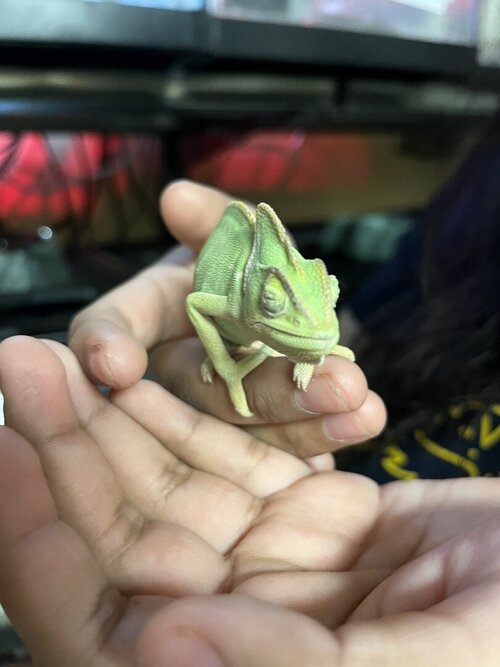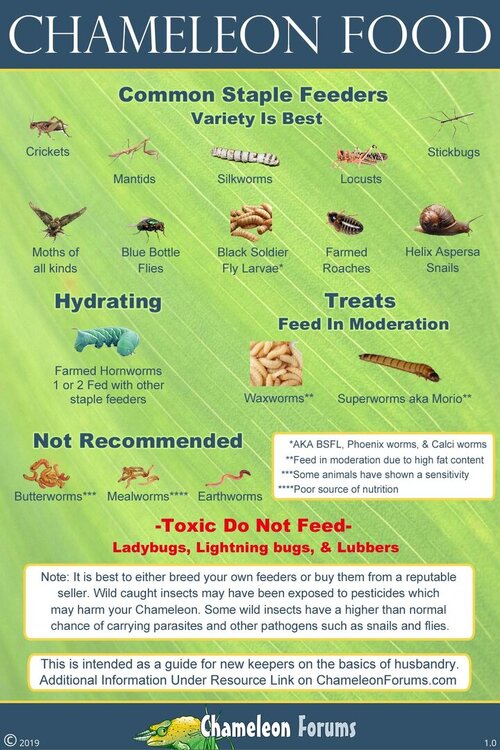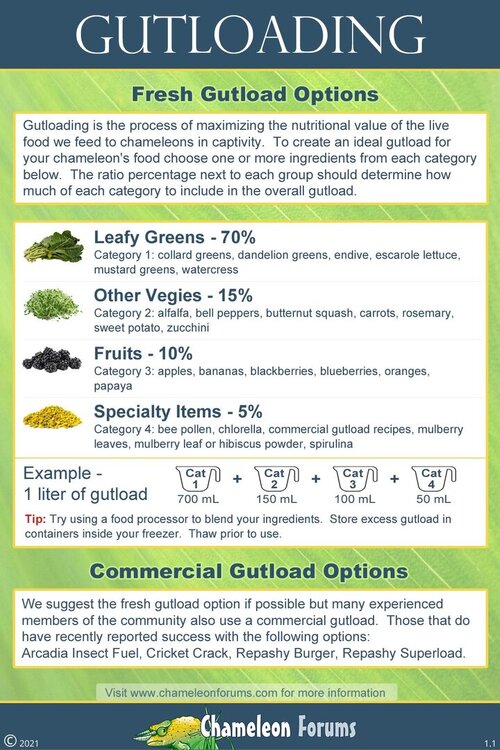MrsTravisRiggs
New Member
Hey all I’m new here and am about to get my first reptile. Now, I work for a major pet store chain, and I’ve read that veiled chameleons should be housed in a screened enclosure for the air, but I live in Beaverton, OR and it’s cold here now. My house has baseboard heating and is only kept at about 65 degrees this time of year. I’m concerned that my soon to be new addition to my family will be too cold. We have him in a glass aquarium at the store right now, but I hear that’s not good for them.
He’s the cute one I have as my picture and his eyes are currently closed and I don’t know why. The vet has had him on antibiotics and eye drops and yet his eyes still stay closed. I’m able to hand feed him crickets and water and he gets dark spots until I start talking to him and holding him then he calms right down. I think he’s chosen me as his human which is why I want to adopt him.
Is there anyone who could give me advice on the type of enclosure I should have for him and any knowledge on his eye situation? I would appreciate that, and I’m sure Sully would too!
Thanks everyone!
He’s the cute one I have as my picture and his eyes are currently closed and I don’t know why. The vet has had him on antibiotics and eye drops and yet his eyes still stay closed. I’m able to hand feed him crickets and water and he gets dark spots until I start talking to him and holding him then he calms right down. I think he’s chosen me as his human which is why I want to adopt him.
Is there anyone who could give me advice on the type of enclosure I should have for him and any knowledge on his eye situation? I would appreciate that, and I’m sure Sully would too!
Thanks everyone!







